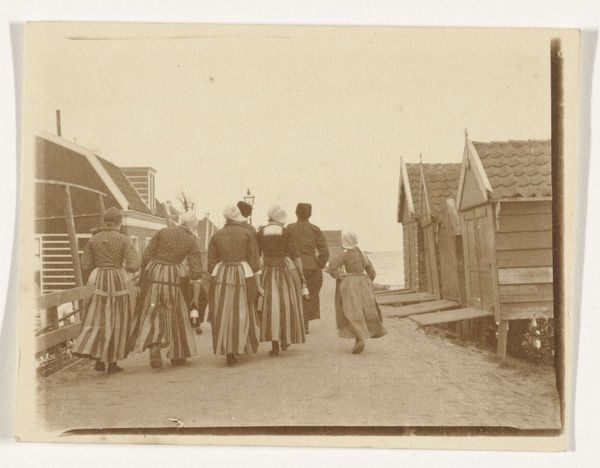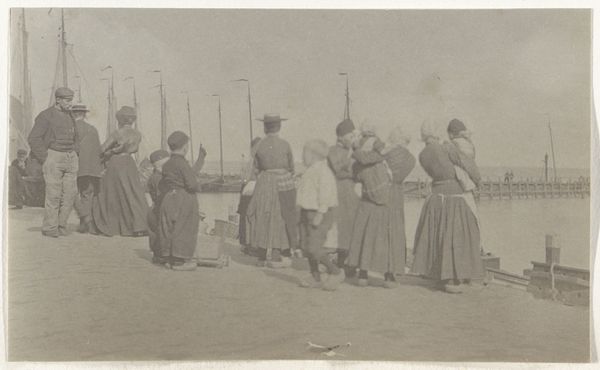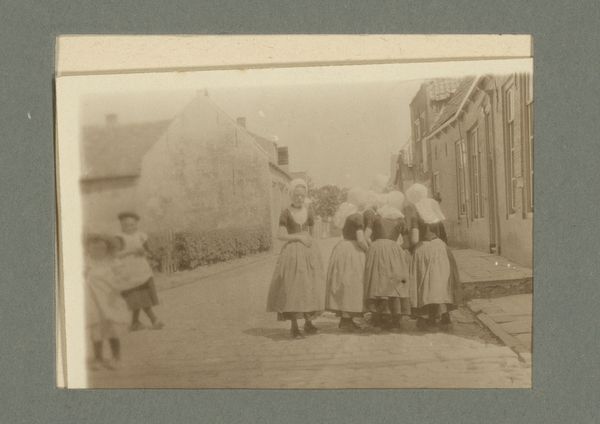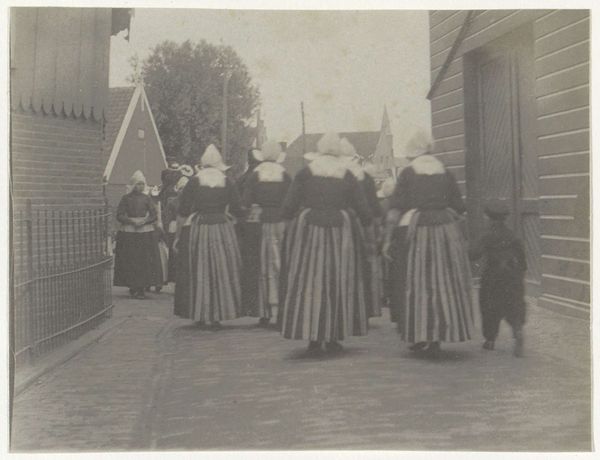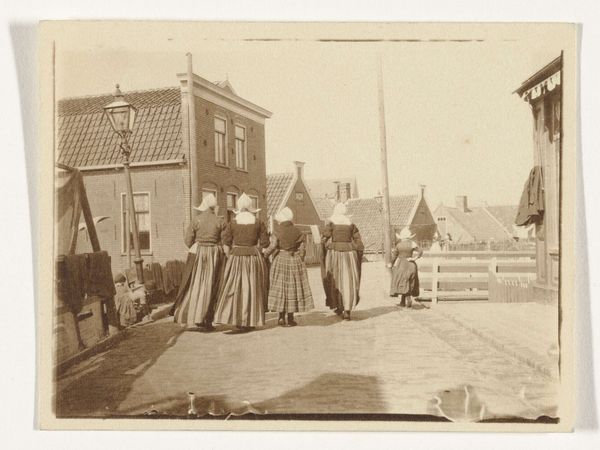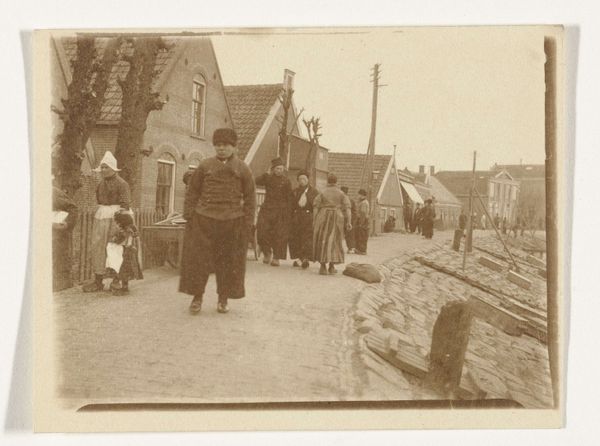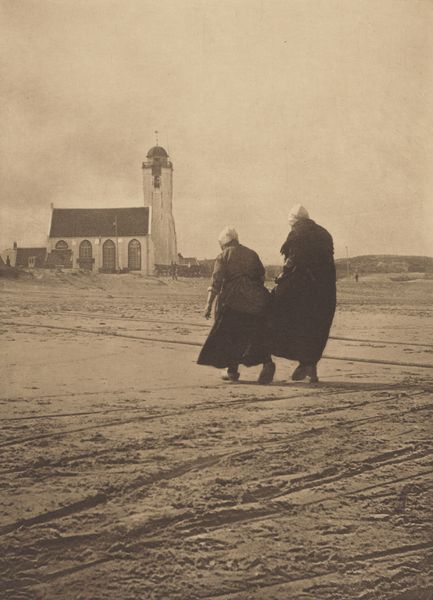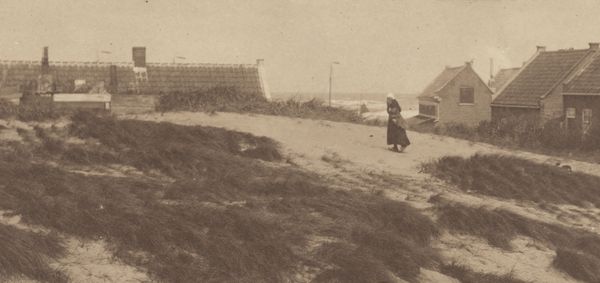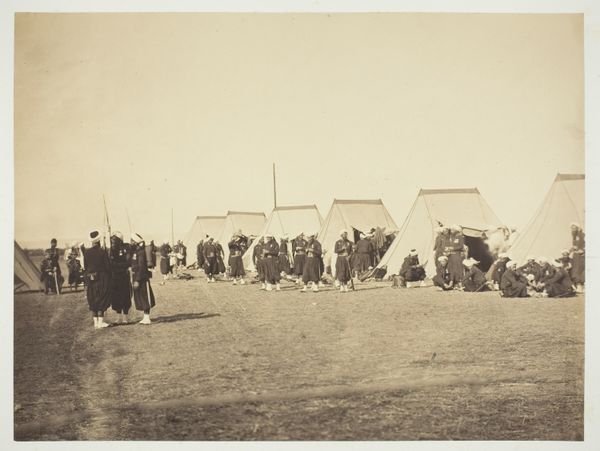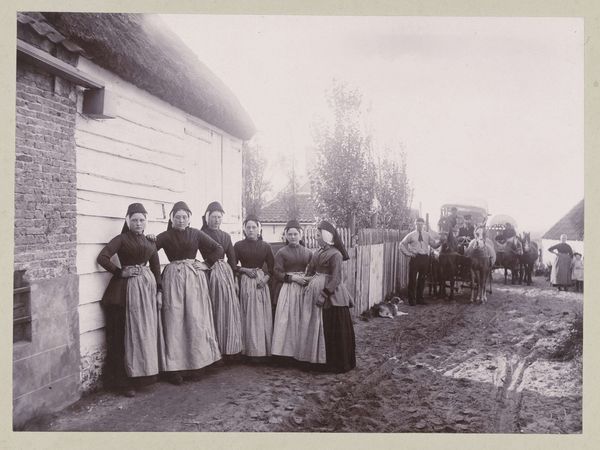
Dimensions: image: 17.9 x 34 cm (7 1/16 x 13 3/8 in.) sheet: 18.4 x 34.5 cm (7 1/4 x 13 9/16 in.)
Copyright: National Gallery of Art: CC0 1.0
Editor: Alfred Stieglitz's "Watching for the Return," a gelatin silver print from 1894, feels incredibly evocative. There's a group of women clustered near what seems like a seaside town. The tonal range is so subtle. How do you interpret this work, especially its commentary on women and community? Curator: Stieglitz’s photograph presents a powerful tableau ripe with layered socio-historical implications. Consider the attire of the women. The uniformity signals their ties to a specific cultural or religious community bound by tradition. What does it mean to gather, watch, and wait in a collective female experience? The composition positions them, noticeably, in the absence of men. Editor: It feels melancholic, charged with a sense of longing or even anxiety. Is that related to the time period, perhaps societal pressures on women? Curator: Absolutely. Think about the late 19th century. It's an era marked by strict gender roles and economic uncertainties, especially within fishing communities dependent on the sea’s unpredictable returns. What does it mean for women to bear witness to a profession dominated by men while their lives revolve around managing households? The 'watching' becomes an act of quiet defiance and resilience, claiming visibility in a patriarchal world. The photograph aestheticizes but also acknowledges those gendered roles in society. Editor: So, their ‘watching’ is not passive. It is loaded with meaning and power? Curator: Precisely. The communal aspect offers a network of emotional labor. Are they watching just for the boats? Or are they supporting each other through uncertainty and perhaps grief? In that period and those places, women banded together in times of crises because they knew they could rely only on one another. This image can be read as a monument to that communal resilience. Editor: That gives me a completely new perspective on it. Thank you for helping me to understand the complex relationship between this image, history, and gender. Curator: It's a photograph that continually provokes crucial questions around gender roles, labor, and visibility. Seeing it through an intersectional lens really highlights its lasting relevance.
Comments
No comments
Be the first to comment and join the conversation on the ultimate creative platform.
